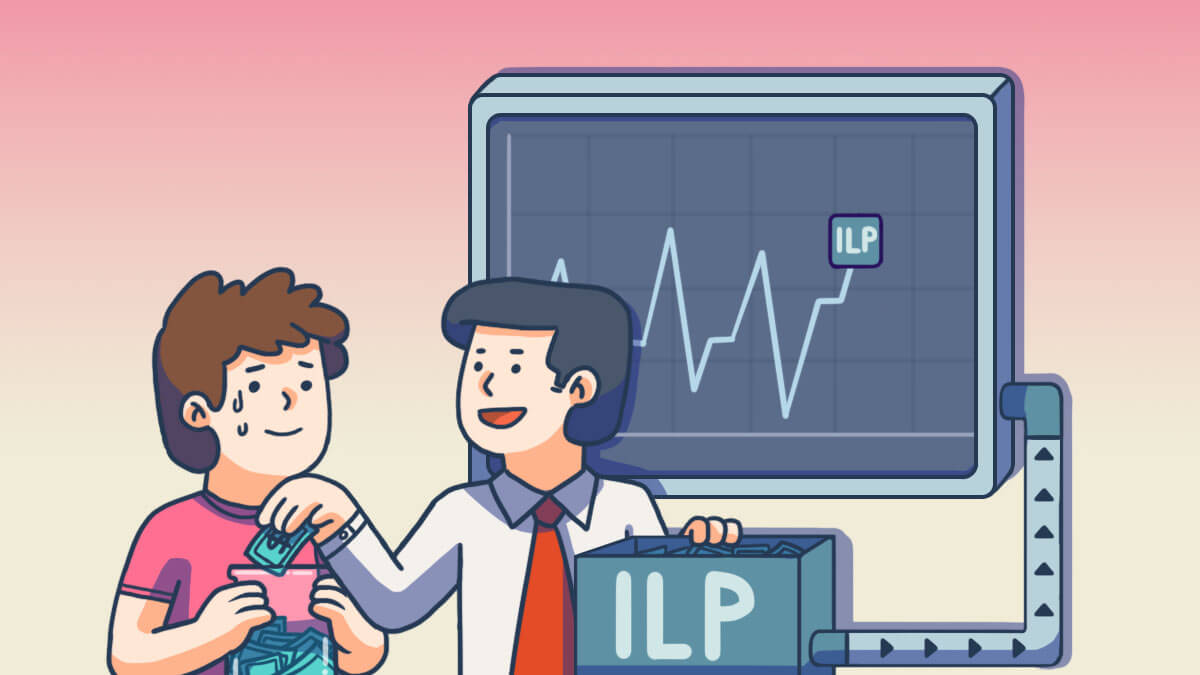Should you avoid investment-linked insurance plans (ILPs)? Here, we debunk 4 common misconceptions about ILPs – and how they could be an indispensable financial tool that’ll provide both wealth-building and insurance coverage benefits.
Investment-linked insurance plans (ILPs) are policies that have life insurance coverage and investment components. While some see ILPs as a financial product that offers the ‘best of both worlds’ benefits to policyholders, others are a little warier, believing that they’d end up better off if they were to keep their wealth accumulation goals distinct from insurance plans. Unfortunately for the latter, their scepticism could be holding them back from leveraging one of the most powerful financial tools available in the market. To prevent you from making that mistake, let’s take a look at 4 widespread misconceptions about ILPs – and why they’re wrong.
Myth #1: You’ll Be Locked into an ILP Sub-Fund
| Initial Amount (S$) | Total Savings After 10 Years; Interest Rate at 0.4% (S$) | Total Savings After 10 Years; Annual Returns at 9.4% (S$) | Difference (S$) |
| 50,000 | 52,036.39 | 122,784.41 | 70,748.02 |
| 100,000 | 104,072.77 | 245,568.82 | 141,496.05 |
| 150,000 | 156,109.16 | 368,353.23 | 212,244.07 |
| 200,000 | 208,145.55 | 491,137.64 | 282,992.09 |
Table showing the potential wealth-building benefits of ILPs compared to regular deposits or savings accounts. For reference: the STI clocked 9.4% total returns in 2019.
With ILPs, your premiums are used to pay for units in one or more sub-funds of your choice, depending on your risk appetite. You can think of sub-funds as unit trusts that can help generate returns for you (i.e., potentially grow your wealth faster than regular deposits or savings accounts). However, one of the most common misconceptions regarding ILPs is that you’d be locked into your pick of sub-funds – unable to make changes to your portfolio even if a specific sub-fund fails to meet your investment objectives or when your financial goals change.
That couldn’t be further from the truth. All ILPs allow you to make changes to your portfolio of sub-funds in line with your financial goals. Of course, certain ILPs will impose a ‘switching charge’ or a limited number of switching for free. Occasionally, though, you can find gems like Tiq Invest by Etiqa Insurance, which entitles you to an unlimited packaged funds switch at no additional charge.
Myth #2: The Older You Get, the More You’ll Pay for ILP Premiums
| Policy Year | Front-end Loading | Back-end Loading | Tiq Invest |
| 1 | 85% of Premium used for Insurer Expense; 15% for sub-fund(s) purchase | 100% of Premium used for Insurer Expense; 0% for sub-fund(s) purchase | 100% of Premium used for sub-fund(s) purchase |
| 2 | 70% of Premium used for Insurer Expense; 30% for sub-fund(s) purchase | 100% of Premium used for Insurer Expense; 0% for sub-fund(s) purchase | |
| 3 | 50% of Premium used for Insurer Expense; 50% for sub-fund(s) purchase | 0% of Premium used for Insurer Expense; 100% for sub-fund(s) purchase | |
| 4 | 0% of Premium used for Insurer Expense; 100% for sub-fund(s) purchase | 0% of Premium used for Insurer Expense; 100% for sub-fund(s) purchase | |
| 5 | 0% of Premium used for Insurer Expense; 100% for sub-fund(s) purchase | 0% of Premium used for Insurer Expense; 100% for sub-fund(s) purchase |
Table illustrating how front-end loading, back-end loading, and Tiq Invest differs when it comes to allocation of premium payments.
Remember the insurance portion of your ILP? Most ILPs will take a cut from your premiums – either through the ‘front-end loading’ or ‘back-end’ loading – to cover the insurance aspect of your policy, including the plan itself and the insurer’s expenses. Since health insurance premium increases with age, this results in another ILP-related misconception: that you’d have to pay increasing amounts of premium over the years. In reality, though, you don’t. As you get older, the amount of premium you pay doesn’t increase; only that more of your premium will have to go towards maintaining your coverage (i.e., the percentage of your premium that goes toward purchasing sub-fund units will decrease).
If this aspect of ILPs puts you off, don’t worry. Certain ILPs (e.g., Tiq Invest) allow you to invest 100% of your premiums without any insurance charges at all – while still offering you coverage against death and terminal illness.
Myth #3: Measuring the Performance of Your ILP Investment Won’t Be Easy
Contrary to popular beliefs, measuring the performance of your ILP investment isn’t a challenge at all. For instance: with Tiq Invest, you’ll receive fund reports of each of your ILP sub-fund on both a semi-annual and annual basis. These documents make it easy for you to understand the performance of your sub-fund relative to other funds with the same or similar benchmarks – so you can judge if it truly matches its stated investment objective. Of course, if you have any further questions, you could always defer to your fund manager.
Myth #4: ILP Is a Risky Investment Move
One of the strongest cases against ILPs is that they usually do not have any guaranteed cash values. Instead, the value of your policy depends on how your portfolio of sub-fund performs. In other words: the cash value of your ILP can take a hit (or even go to 0) if your sub-fund perform poorly. And there goes your investment and insurance coverage. While this certainly holds for certain ILPs out there, you also have your pick of ‘risk-free’ options.
With Tiq Invest, for example, you never have to worry about an economic downturn wiping out the entirety of your insurance coverage because your loved ones are still entitled to a lump sum payment at the higher of 1) 105% of net premiums paid or 2) account value. So if you’re ready to take on an ILP that truly offers the ‘best of both worlds’ – without worrying about the typical, associated cons – then definitely check out Tiq Invest.
Find out more about digital ILPs and sign up online at Tiq Invest.
This policy is underwritten by Etiqa Insurance Pte. Ltd. (Company Reg. No. 201331905K).
Tiq Invest is an Investment-linked Plan (ILP) which invest in ILP sub-fund(s). Investments in this plan are subject to investment risks including the possible loss of the principal amount invested. The performance of the ILP sub-fund(s) is not guaranteed and the value of the units in the ILP sub-fund(s) and the income accruing to the units, if any, may fall or rise. Past performance is not necessarily indicative of the future performance of the ILP sub-fund(s).
A product summary and product highlights sheet(s) relating to the ILP sub-fund(s) are available and may be obtained from us via this link here. A potential investor should read the product summary and product highlights sheet(s) before deciding whether to subscribe for units in the ILP sub-fund(s).
As buying a life insurance policy is a long-term commitment, an early termination of the policy usually involves high costs and the surrender value, if any, that is payable to you may be zero or less than the total premiums paid. You should seek advice from a financial adviser before deciding to purchase the policy. If you choose not to seek advice, you should consider if the policy is suitable for you.
This content is for reference only and is not a contract of insurance.
Full details of the policy terms and conditions can be found in the policy contract.
This policy is protected under the Policy Owners’ Protection Scheme which is administered by the Singapore Deposit Insurance Corporation (SDIC). Coverage for your policy is automatic and no further action is required from you. For more information on the types of benefits that are covered under the scheme as well as the limits of coverage, where applicable, please contact us or visit the Life Insurance Association (LIA) or SDIC web-sites.
This advertisement has not been reviewed by the Monetary Authority of Singapore.
Information is accurate as at 15 October 2024.
This article was first published OCT 1, 2021, by VALUECHAMPION EDITORIAL TEAM. You can see the original article here. All information is correct as at the date of publication.







